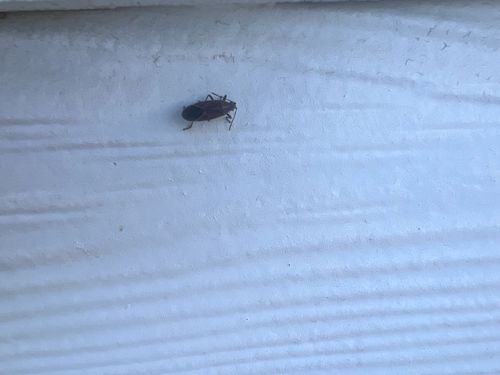Boxelder Bug
Scientific Name: Boisea trivittata
Order & Family: Hemiptera (True Bugs), Rhopalidae (Scentless Plant Bugs)
Size: Approximately 1/2 inch (12.7 mm) long

Natural Habitat
Commonly found around boxelder, maple, and ash trees. They often overwinter in sheltered locations like cracks in foundations, under siding, or inside homes.
Diet & Feeding
Primarily feed on the sap of boxelder trees, particularly the female (seed-bearing) trees, and sometimes maples and ash trees. They use their piercing-sucking mouthparts to extract fluids from leaves, flowers, and developing seeds.
Behavior Patterns
Boxelder bugs are known for congregating in large numbers, especially during the fall as they seek overwintering sites. They are typically docile but can become a nuisance when they invade homes. They are strong fliers and are attracted to warm, sunny surfaces.
Risks & Benefits
Potential risks include being a nuisance pest when they enter homes in large numbers, though they do not bite humans or cause structural damage. They can stain curtains, furniture, and walls with their excrement if crushed. They are not known to provide significant benefits to the ecosystem, but they are a natural part of the insect food chain.
Identified on: 9/19/2025